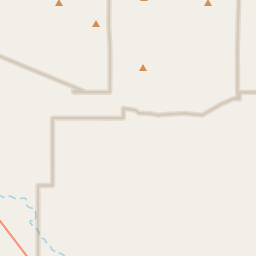Trinidad Gachupin Medina (ca. 1883–1964), Zía Pueblo
Historical marker location:






Trinidad Gachupin Medina was the most widely known Zía potter of her time. She was recognized for her large polychrome storage jars. Sponsored by trader Wick Miller, she toured the United States from 1930 to 1946, demonstrating pottery making at department stores and national exhibitions, including the World’s Fair held in Chicago. Generations of Zía potters continue this tradition, which she helped to preserve
The Historic Women Marker Initiative of 2007 captured the public’s imagination. It has received international attention for its ambitious goal of telling women’s history in New Mexico on some of the state’s 650 Official Scenic Historic Markers. Before 2007, perhaps three markers mentioned women at all.
The lives of the only known female Buffalo solider, one of the world’s most famous artists, and unsung heroes like Sally Rooke who gave her life at her switchboard warning Folsom’s citizens of a wall of water approaching their town are honored on 75 women’s history markers.
The first phase of the Initiative concluded in 2010. Ten more markers were installed in 2015 and an additional 25 are expected to bring their numbers to an even 100 in the coming years. The program is a partnership of the New Mexico Women’s Forum, HPD, CPRC, New Mexico Department of Transportation, and the public. The 2006 legislature made the initial 65 historic markers possible.
Like all state historic markers, the women’s history markers are designed in the Park Service Rustic style adopted when the program began in 1935. What’s different is their perspective of New Mexico history.
New Mexico was one of the last territories to become a state, gaining statehood in 1912. Before that, it had been part of the Spanish Empire, Mexico, and the United States Territory of New Mexico.
In the 19th century, the construction of the Santa Fe Trail brought increased trade and settlement to the area. As American settlers arrived, conflicts between the newcomers and the Native American tribes escalated, leading to the New Mexico Wars. These conflicts ultimately resulted in the displacement of the Native peoples and the establishment of American control over the region.
Sandoval County played a significant role in the New Mexico Territory during the Civil War. It was the site of the Battle of Valverde, a major engagement between Union and Confederate forces. Following the war, the area experienced an influx of settlers attracted by the agricultural potential and abundant natural resources of the Rio Grande valley.
In the 20th century, Sandoval County continued to develop and grow. The construction of Interstate 25 and the subsequent expansion of transportation routes brought increased connectivity to the region. Today, Sandoval County is known for its stunning landscapes, including the famous Jemez Mountains and the Valles Caldera National Preserve. It also serves as a popular tourist destination, attracting visitors with its rich cultural heritage, Native American art, and historical landmarks.
Sandoval County Timeline
This timeline provides a glimpse into the major events and milestones that have shaped the history of Sandoval County, New Mexico.
- 1852: Sandoval County is established as one of the nine original counties of the New Mexico Territory.
- 1883: The county seat is moved from Bernalillo to Cuba.
- 1918: Coyote Dam is constructed, providing irrigation water for local farmers.
- 1944: The town of Jemez Springs is incorporated.
- 1974: Sandoval County Historical Society is founded to preserve and promote the county's history.
- 1985: The Jemez Pueblo is designated a National Historic Landmark.
- 1998: Petroglyph National Monument is established within the county's borders.
- 2011: The village of Rancho de San Juan is incorporated.